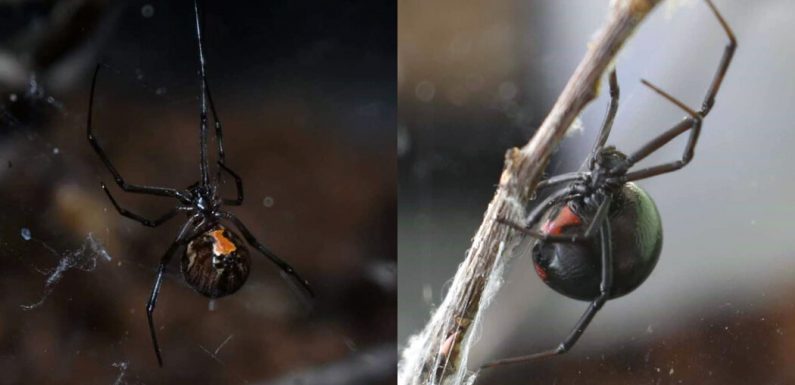
Few spiders in the United States have a more fearsome reputation than black widows. But throughout the South, the bulbous arachnids with red hourglasses on their bellies are engaged in a lethal competition with the brown widow, a relative from abroad — and they’re losing.
This isn’t a case of one species outcompeting another for food or habitat. In research published Monday in the Annals of the Entomological Society of America, biologists found that young brown widow spiders have a dramatic tendency to seek out and kill their American cousins.
“Brown widows will aggressively go after black widows, chase them down,” said Louis Coticchio, a science tutor at St. Petersburg College in Florida and an author of the paper. “They don’t play well with being neighbors.”
Three species of black widows are native to North America, including the Southern black widow, Latrodectus mactans. Exceedingly shy insect hunters, black widows like to live in crawl spaces, woodpiles and sheds. This fondness for human habitation does occasionally lead to people getting bit — 1,004 cases in 2021, according to America’s Poison Centers — but deaths are extremely rare. “Black widows generally don’t bite when harassed,” preferring to run, play dead or flick webbing at a poking finger, Mr. Coticchio said. “It’s only pinching them that’ll get you bit.”
Brown widows — a closely related species — arrived in Florida around 1935, likely from South Africa. A single mother produces multiple egg sacks and potentially thousands of spiderlings. Like black widows, brown widows like to live around people. Brown widows are less venomous than their native cousins, and aren’t at all shy.
Mr. Cottichio spent several years working as a venomous species zookeeper in California, looking for spiders in his spare time. While hunting for western black widows in suburban Los Angeles, he noticed that wherever they and brown widows overlapped, the black widows eventually disappeared. Upon starting his bachelor’s degree at the University of South Florida, he found the same thing. “Every time I returned to a site, there were less and less of them until there were none.”
To figure out why, Mr. Coticchio and his colleagues looked at the mathematical population modeling of the two widow species, which showed that both black and brown widows were more likely to get eaten then to starve — suggesting that they aren’t competing over scarce prey.
When they paired brown and black widows in container habitats — along with other related species like red house spiders and triangulate cobweb spiders — the researchers found that brown widows were 6.6 times as likely to kill black widows than other species. Young brown widows in particular made a beeline for their native cousins, eating them 80 percent of the time.
Adult brown widows were less belligerent, the researchers found, and significantly less likely to successfully kill a black widow hiding in an established web. But they still instigated observed attacks. “Southern black widows were never the aggressor and always the prey,” Mr. Cottichio said.
What drives such predation attempts? One possibility lies in the spiders’ respective temperaments, the researchers suggest: Brown widows tend to be bold, investigating nearby webs and attacking spiders that don’t resist. House and cobweb spiders challenge them, and brown widows often go on to coexist with them peacefully. The shy, retiring black widows generally tried to escape, fighting back only as a last resort.
“We have found similarly high levels of aggression and activity in invasive brown widows in Israel,” said Monica Mowery, a spider biologist at Ben-Gurion University of the Negev who was not involved in the new study. “One key remaining question is whether brown widows are outcompeting local species” in other parts of the world that they have invaded, she said.
In the Southern and Western United States, the outlook for urban-living black widows isn’t good. But the species does have a fallback: Black widows like deserts and woodlands as much as suburbs, Mr. Cottichio said, while brown widows prefer urban and suburban areas. The ongoing contest might end with black widows being cast out of crawl spaces and attics in favor of the wilderness, where their aggressive cousins won’t follow.
In the meantime, Mr. Cottichio said, if you find yourself on a property with black widows, don’t be so quick to kill them: They’re already having a bad time.
“If you have some on your property,” he said, “do a good deed, and move it outside somewhere.”
Source: Read Full Article